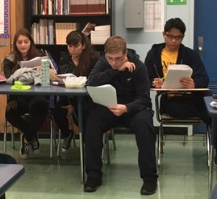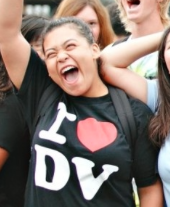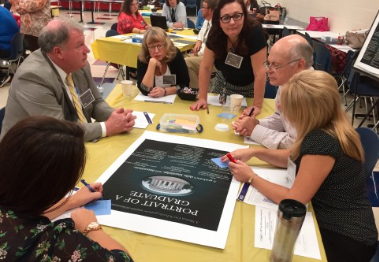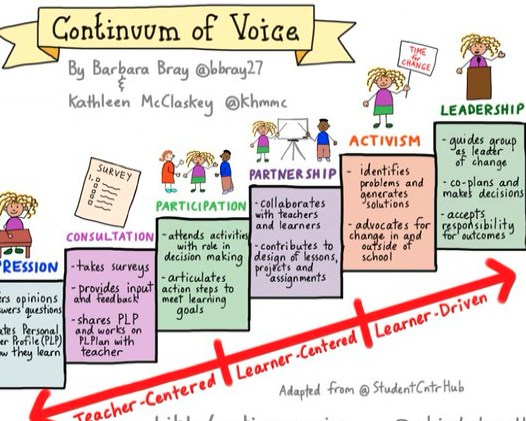Student Generated Discussion Spawns Meaningful Learning

This article explores why teachers must demonstrate to students that they can be trusted. They can grow that trust by allowing students to jump in and take control of the direction of their learning. In a classroom, the unexpected can be both scary and exhilarating, which is why there is a need to create environments… Read More ›
I’m a Teacher Who Hates Technology—So Let Me Design the Products

Ashley Lamb-Sinclair is a teacher who believes that educational technology is often just something else teachers have to juggle, rather than something they can help create in order to ease professional burdens. From her experience, the technology given to teachers to work within classrooms or to help with professional development does not connect to the… Read More ›
After Common Core, States Set Rigorous Standards

This article is about how the state standards have improved the implementation of the Common Core. Despite widespread skepticism, the campaign to implement Common Core State Standards (otherwise known as Common Core) has achieved phenomenal success in state houses across the country. Since 2011, 45 states have raised their standards for student proficiency in reading… Read More ›
How Technology Helped Deliver a Taste of Victory to a Struggling Newark School

This article is about the plan to use new instructional models to get better test results for the Quitman Street Renew School. The schools that has used Education Elements’ blended learning models to help improve test results. The journey to personalized learning at Quitman Street Renew School began during the 2013-14 school year. Because over 80 percent… Read More ›
Student Voices in Action: Spotlight on the National Council of Young Leaders

Today, more than ever before, youth voices are pushing agendas for change in education. Young people have some of the most valuable input when it comes to education, postsecondary success, and issues that affect low-income youth. They know that if any significant change is going to take place in the education sector, they have to… Read More ›
Can a Truly Student-Centered Education Be Available to All?

The Big Picture Learning Network started with the Metropolitan Regional Career and Technical Center in Providence, Rhode Island, and has expanded to almost 100 schools around the world, with 55 in the U.S. alone. The majority of the U.S.-based schools are traditional in-district public schools, although about 25 percent are public charter schools. Many are located… Read More ›
Personalized Learning is Not a Product

This article argues the possible down-sides to personalized learning. For all the hype surrounding so-called “personalized learning,” plenty of skeptics worry that it could do more harm than good—especially within the context of larger trends in academia. They worry that, among other things, personalized learning products will be used not to improve student learning, but… Read More ›
How Da Vinci Schools Built an Instructional Model Around “Failure”

This article describes how the Da Vinci schools are giving their students the right to fail. Giving students the freedom—and fearlessness—to fail first requires them to take ownership of their own learning, and Da Vinci achieves that with a curriculum centered around project-based learning, or PBL. Source Organization: EdSurge Visit the Resource
5 Ways to Build Student Agency in the Digital Age

This article explores the idea that youth today may feel external social forces are controlling their lives much more than their own internal compasses. Taking this into consideration, the article shares tips on how young people can develop their own sense of agency in the digital age. Source Organization: Getting Smart Visit the Resource
Instructional Coaching for Secondary School Transformation

This article the second in a three part series on instructional coaching and professional learning. In 2012 Gary Barber took over as superintendent of Marion, Ohio and the district launched a series of community conversations that led to aggressive reforms seeking improved academic performance and workforce preparation. The conversations with teachers about their next-generation vision… Read More ›
5 Key Ways to Engage Young People in Your Next Organizing Campaign

Chiara Wegener, External Affairs Manager for the Nellie Mae Education Foundation, shares tips and tricks for fostering youth engagement online. How do you engage young people in a digital campaign and move them to action? The Nellie Mae Education Foundation is supporting a number of amazing youth groups around New England that are working to promote student… Read More ›
Continuum of Voice: What it Means for the Learner

This infographic, “Continuum of Voice: What it Means for the Learner,” adapts Students at the Center’s Continuum of Voice chart by adding examples and ideas that illustrate each level to support implementation using a design by Sylvia Duckworth. Source Organization: Personalize Learning Visit the Resource